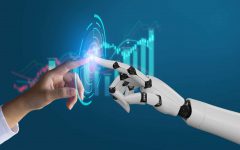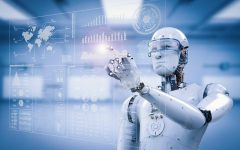AI-Powered Visualization: Exploring the World of Artificial Intelligence 3D Rendering with VERAS
November 2, 2023 2023-11-02 16:56AI-Powered Visualization: Exploring the World of Artificial Intelligence 3D Rendering with VERAS
Introduction
Artificial Intelligence (AI) has revolutionized various industries by offering innovative solutions to complex problems. One of the most intriguing applications of AI is in 3D rendering and visualization. In this article, we’ll delve into the world of AI-powered 3D rendering with a particular focus on the cutting-edge technology known as VERAS. But first, let’s understand the significance of AI in 3D rendering.
The Role of AI in 3D Rendering
3D rendering is a crucial component of industries such as gaming, architecture, film production, and more. It involves transforming complex mathematical models into visually appealing images or animations. Traditionally, 3D rendering has been a time-consuming and resource-intensive process. AI is changing this landscape by significantly improving rendering speed, realism, and efficiency.
AI algorithms can handle tasks like texture generation, lighting optimization, and even predicting how certain objects should behave in a given environment. This not only saves time but also enhances the quality of the final output. VERAS (Visual Environment Rendering with Artificial Intelligence and Simulation) is at the forefront of these advancements.
Introducing VERAS
VERAS is an innovative AI-powered 3D rendering platform that leverages the capabilities of deep learning and neural networks to create stunning visual environments. It combines the power of AI with real-time simulation to provide a versatile tool for various industries.
Key Features of VERAS:
- Realistic Environments: VERAS is designed to generate hyper-realistic 3D environments that mimic real-world settings. Whether it’s simulating natural landscapes, urban environments, or architectural designs, VERAS can replicate them with astonishing accuracy.
- Faster Rendering: Traditional 3D rendering can be time-consuming. VERAS significantly reduces rendering times, making it a valuable tool for professionals who require quick turnarounds without compromising quality.
- Adaptive AI: VERAS’s AI algorithms adapt to different scenarios, making it suitable for a wide range of applications, including video games, virtual reality experiences, and architectural visualization.
- Interactive Simulations: VERAS allows users to interact with and explore the rendered environments in real-time. This feature is particularly beneficial for architectural firms, where clients can virtually walk through their future projects.
- Versatile Applications: VERAS has found applications in industries beyond entertainment and architecture. It’s being used in autonomous vehicle simulations, medical imaging, and even urban planning.
The Future of AI-Powered 3D Rendering
AI-powered 3D rendering, as exemplified by VERAS, is poised to reshape industries and open up new possibilities. As AI algorithms continue to evolve, we can expect even more realistic and immersive experiences across various domains.
The convergence of AI, 3D rendering, and real-time simulations holds immense potential. Whether it’s designing cities of the future, training autonomous vehicles, or creating next-generation video games, AI-powered visualization is leading the way.
Conclusion
AI-powered 3D rendering, with technologies like VERAS, represents a significant leap forward in the world of visualization. It enables professionals from diverse fields to create, explore, and interact with virtual environments that were once only possible in our imaginations.
The integration of AI in 3D rendering is making complex tasks easier, faster, and more accessible. The future holds exciting prospects for this technology as it continues to redefine industries and push the boundaries of what’s possible in the realm of visual representation.
Watch a demonstration of VERAS in action here.
As we move forward, AI-powered 3D rendering will undoubtedly play a pivotal role in shaping how we perceive and interact with the digital world.























